Since the beginning of the space age (the 1950’s), scientists have started to explore the possibilities of humans colonizing Space and thus, moving the boundaries of our existence out of the confined space of our planet out into space. Apart from colonizing other planets, there’s the concept of building huge Space stations that can accommodate thousands of people and function as small towns.
Science fiction novels, movies, and TV shows also amuse us with this kind of ideas for a long time. The Book (and the movie as well) “2001: A Space Odyssey” sets part of its plot on a space station called “Space Station V”; The TV Show “Babylon 5” also tells us about the events that happen on a huge space station; the Star Wars movies also implement the idea of space stations (the Death Star is a mobile space station).
There is one man that can be considered as a pioneer in the scientific research of space colonization and space habitat. His name is Gerard Kitchen O’Neill. O’Neill was an American physicist and a professor at Princeton University. Besides many other important inventions he made (the particle storage ring and the idea of a “mass driver”), in the 1970’s he developed an intricate plan on how to build human settlements in outer space. The plan included a design for a space station that is known as the O’Neill cylinder.
In the mid-1970’s, Space Settlements, or Space Colonies, first received serious scientific attention. NASA Ames Research Centre heard about Gerard’s ideas and sponsored him to conduct two space colony summer studies which were held in 1975 and 1976 at Stanford University. The participants in this studies were encouraged to develop the ideal model of a space habitat. This research produced three basic designs which approached the challenge of living in space from different angles. These designs soon became very popular throughout the world. They were the starting point of many further research papers and the inspiration of many fictional works that were written in that time and even today.
The three primary distinctive colony designs that were the result of the studies are the Stanford Torus, Bernal Spheres and Cylindrical Colonies (the Island Three concept). NASA made many artistic rendering of the concepts during the studies, based on the research papers submitted by the participants. The illustrations are beautiful and inspiring. Take a moment and imagine that you are a “space citizen” living on one of these “vintage” space age cosmic stations in the distant future.
The Stanford Torus (The basic design for toroidal Colonies) is described as one mile in diameter, rotating at 1 rotation per minute that produces 1 g of acceleration and therefore, simulating decent gravity. The torus interior is imagined to be about 420 feet wide, with the capacity to accommodate a space population of 10,000 people. The station is also capable of holding food production facilities and other services required to sustain the people living there. This design also involved a large mirror “floating” above the settlement, which reflects sunlight to solar panels for power generation and multiple smaller mirrors around the hub that will direct daylight into the living areas of the space station.
An illustration of construction works done along the torus rim
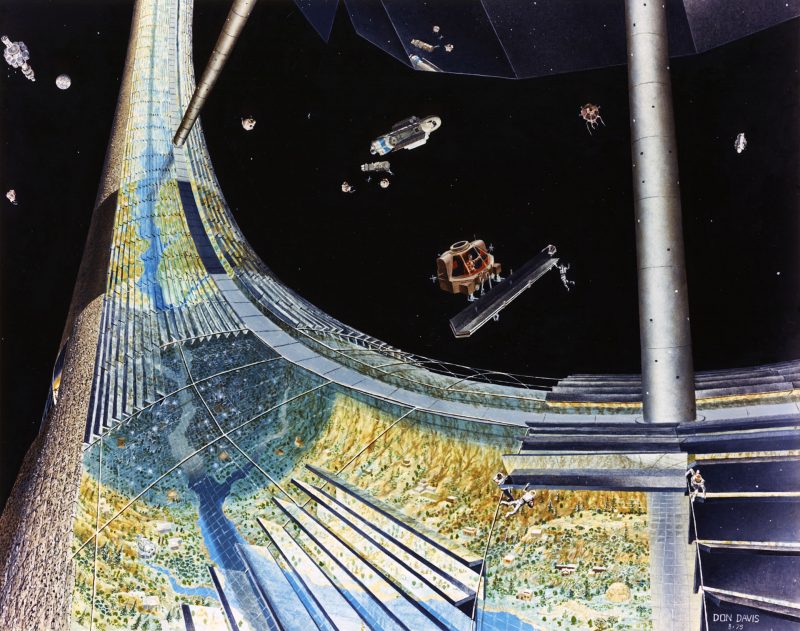
A cutaway showing an idyllic neighborhood inside torus
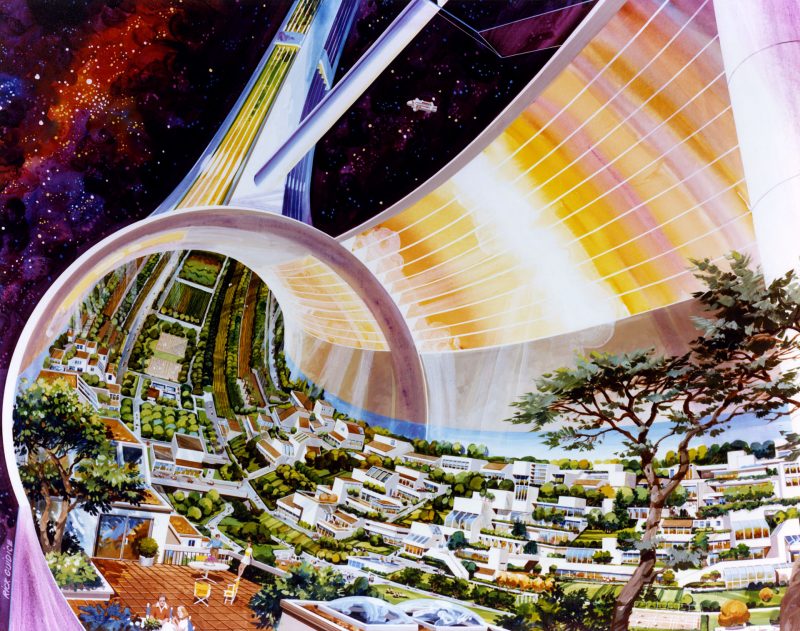
An exterior view of a toroidal colony
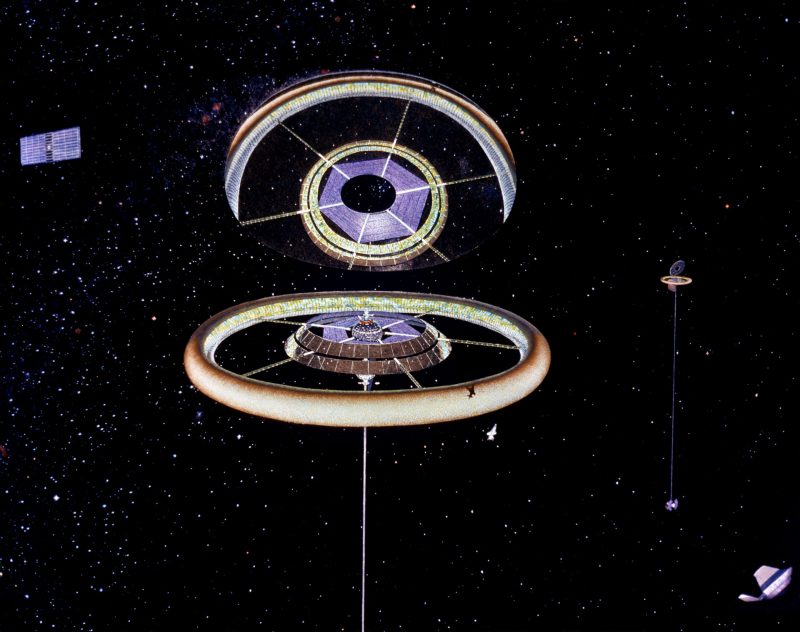
The interior of a toroidal colony with a beautiful park and a recreational center
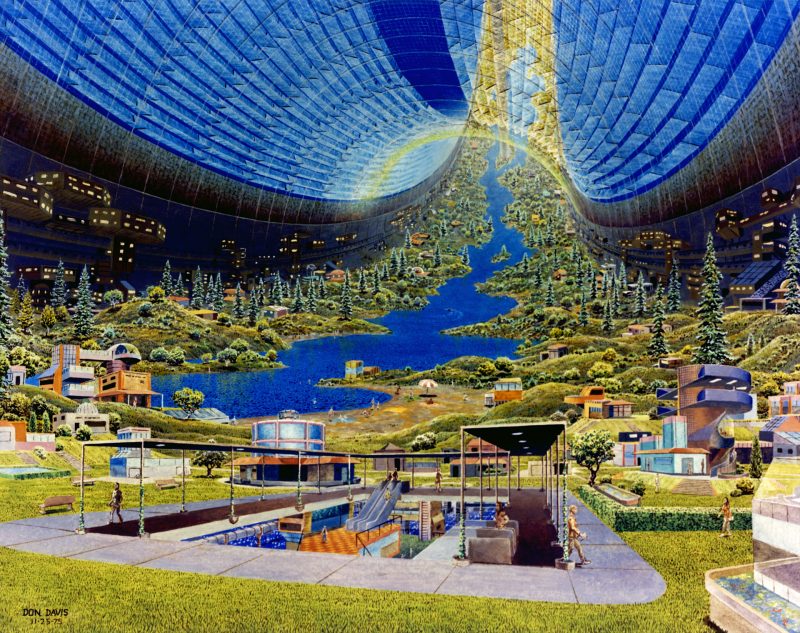
A 3D model of a torus colony
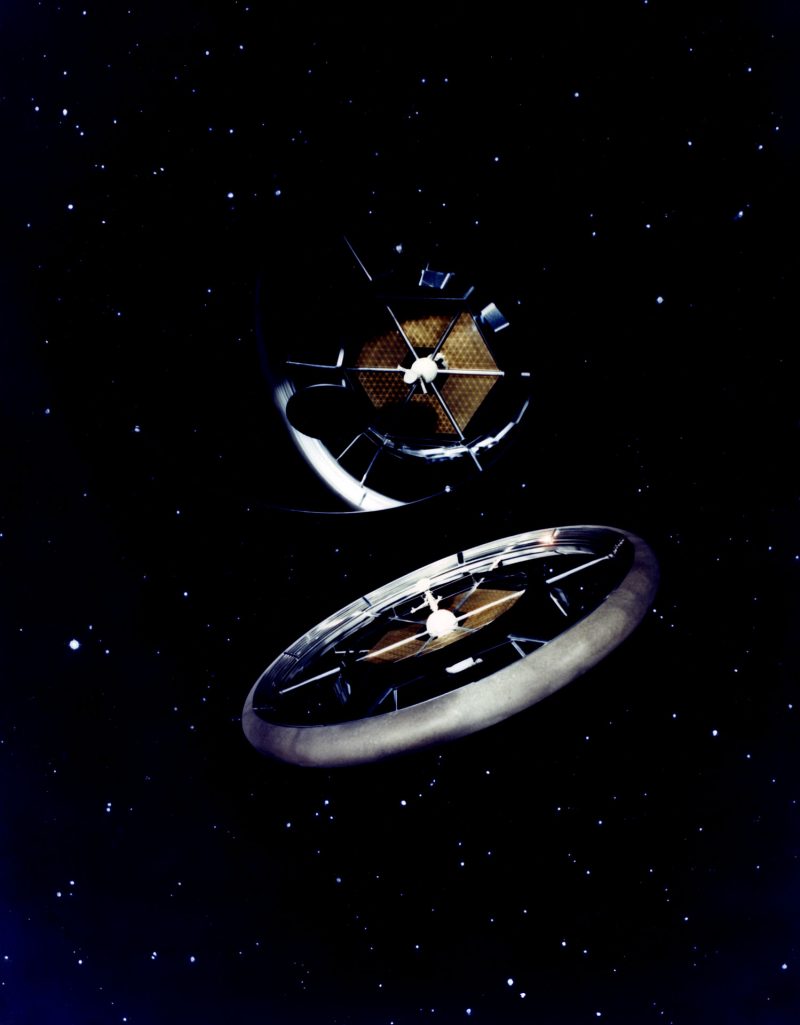
The Bernal Sphere represents a spherical approach on the space habitat problem. This design also considered a population of 10,000. The inhabitants would be accommodated in the spherical volume in the middle of the station. Sunlight is provided into the interior of the Bernal sphere by mirrors at both “ends” of the spherical section. Toruses, extending from either side of the habitation sphere, were meant to house the agricultural areas. This space habitat design was considerably easier to design, and within it was possible to maintain different climates or seasons in different modules in order to grow a variety of crops.
A cutaway illustration of the agricultural modules of a Bernal sphere
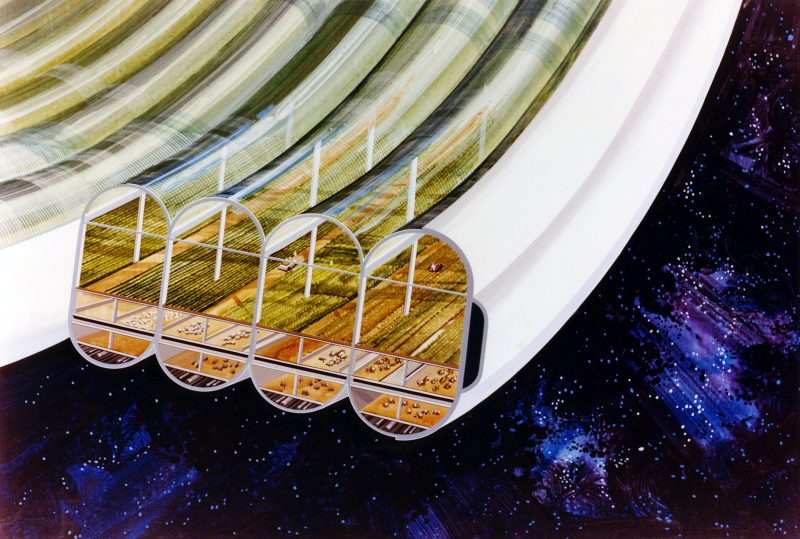
A construction crew working on the space station
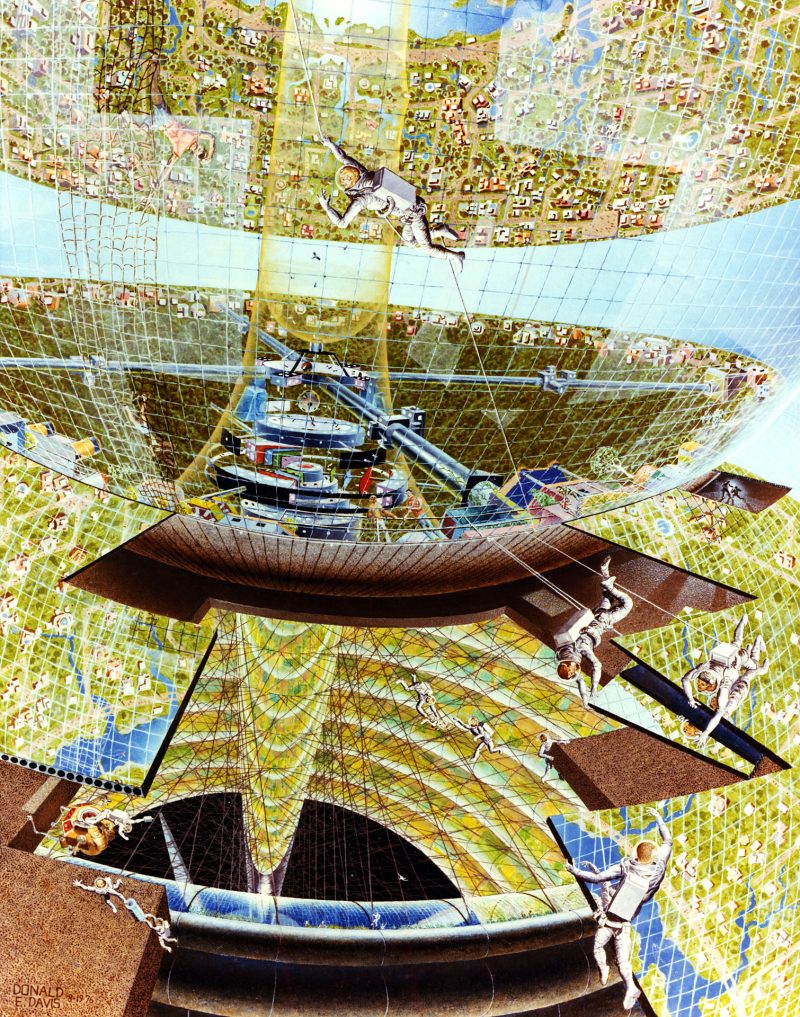
A view of the interior of a Bernal Sphere
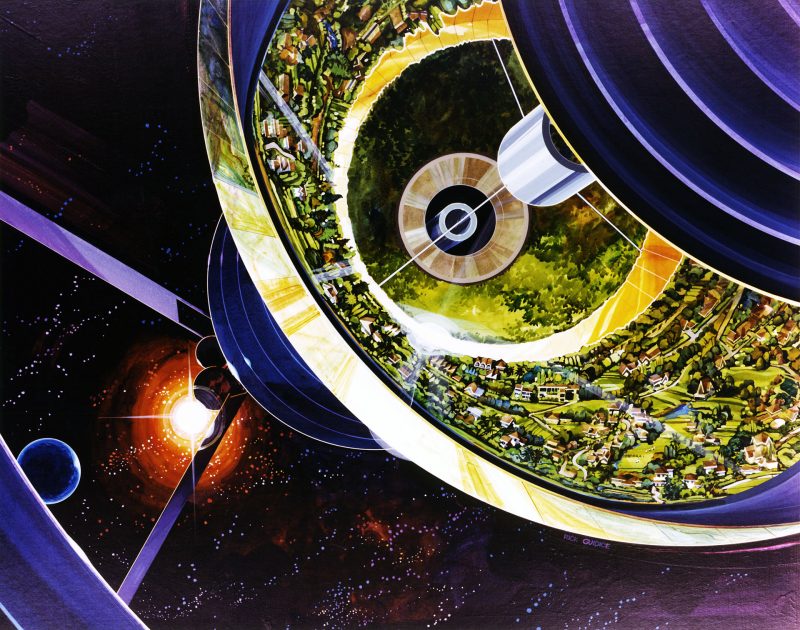
The exterior view of a Bernal Sphere space habitat
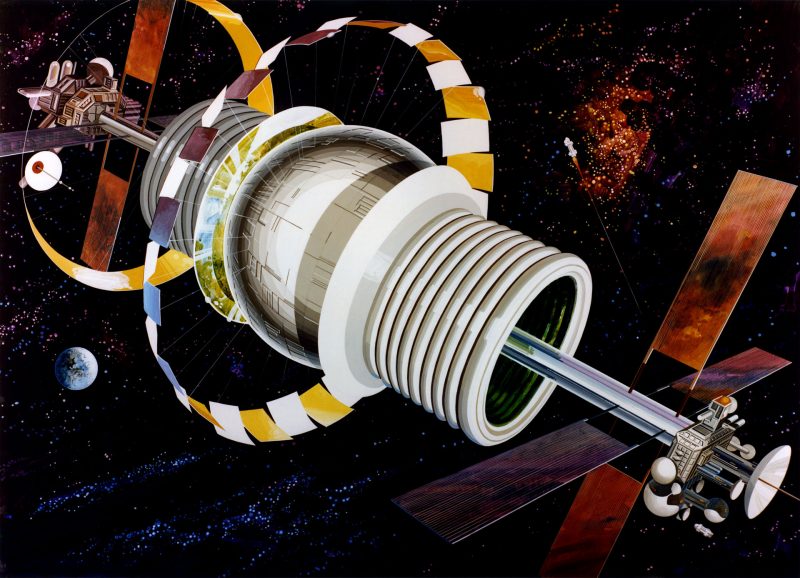
A beautiful settlement inside the central inhabited sphere of the station. An illustration of a person with a glider can be seen.
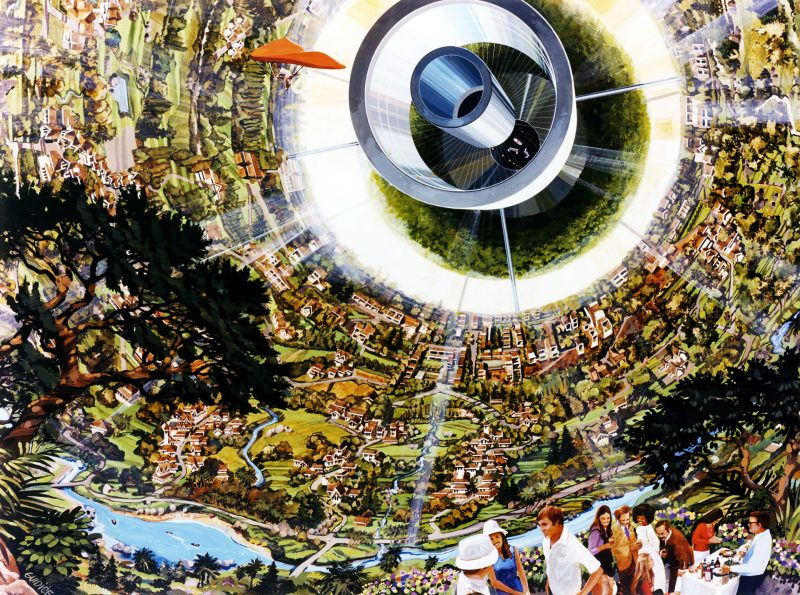
A 3D model of a Bernal Sphere
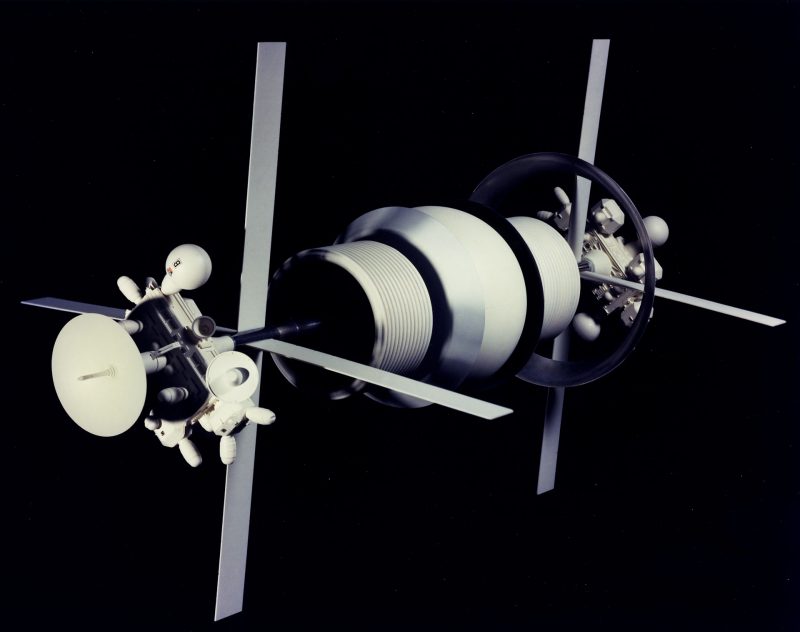
One of the most ambitious designs during the studies was the Island Three design – a huge cylindrical space station. The concept consists of two 4 miles wide and 20 miles long cylinders that are rotating in counter directions. The researchers of this model claimed that the station would be large enough to accommodate a space population of 10 million people. The cylinders are constructed of three land areas that are 2 miles wide. They alternate with three “window” areas of the same dimensions as the land areas. Again, mirrors are used like in the other designs. They are angled on one end of each cylinder to bring the much-desired sunlight into the windows. Small pods on the other end of each cylinder are designated for agricultural and industrial areas.
An artistic representation of the eclipse of the Sun viewed from inside a cylindrical space habitat. Artificial weather (clouds) and vegetation on the land area beneath can be seen also.
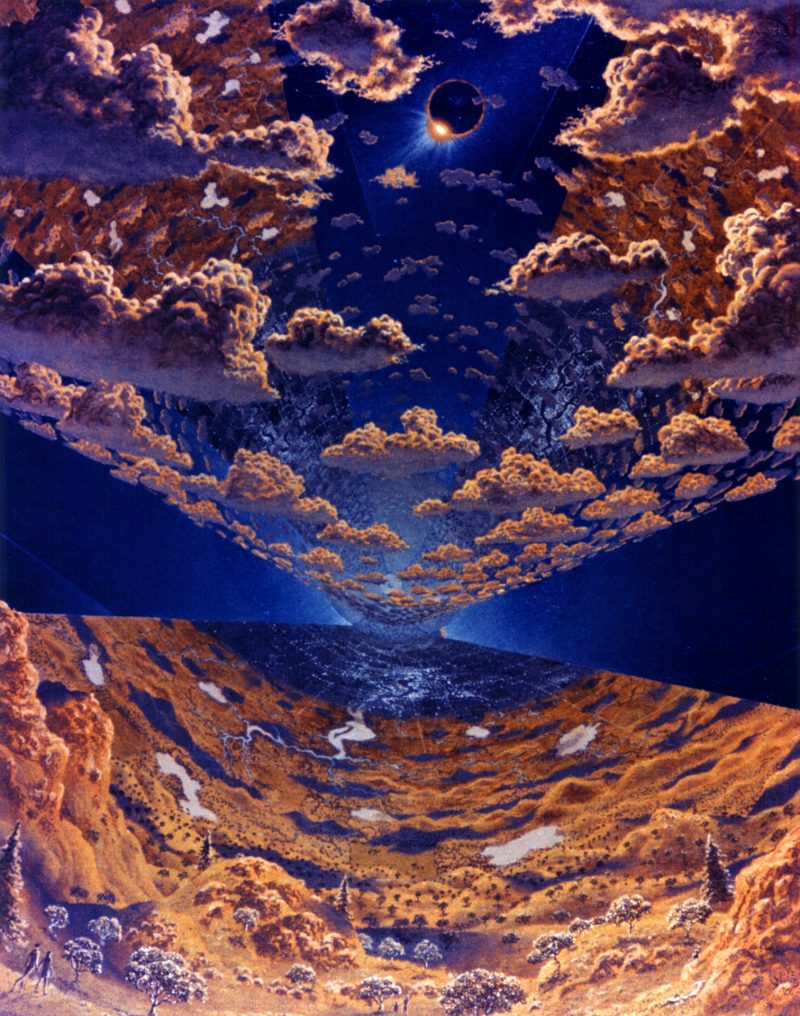
An amazing illustration that shows the huge interior of a cylindrical space station. Even a suspension bridge is imagined in the design.
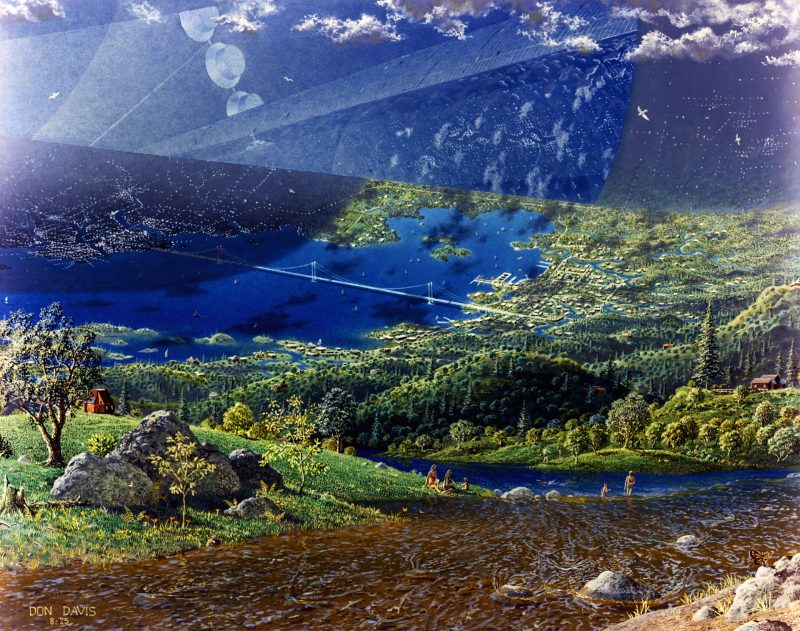
The exterior view of the Island Three space habitat concept (a double cylinder colony)
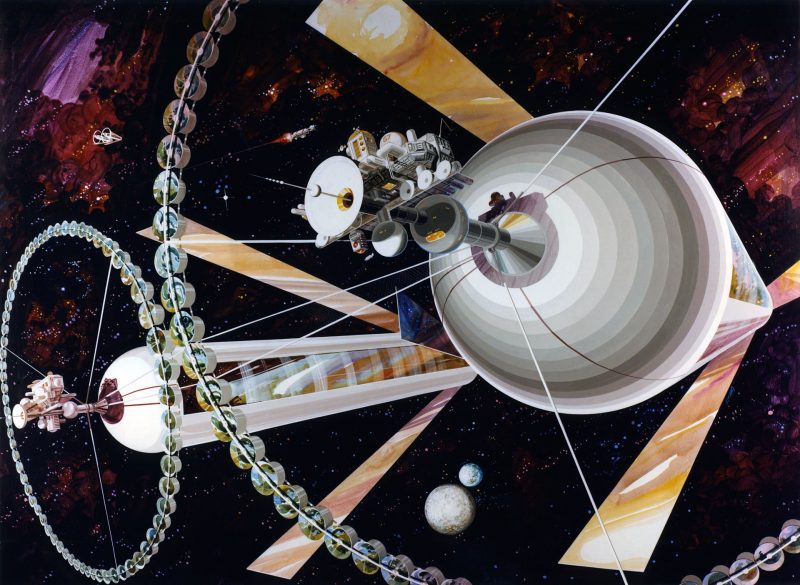
The three large land areas with the windows between them as described in the study of Island Three space station
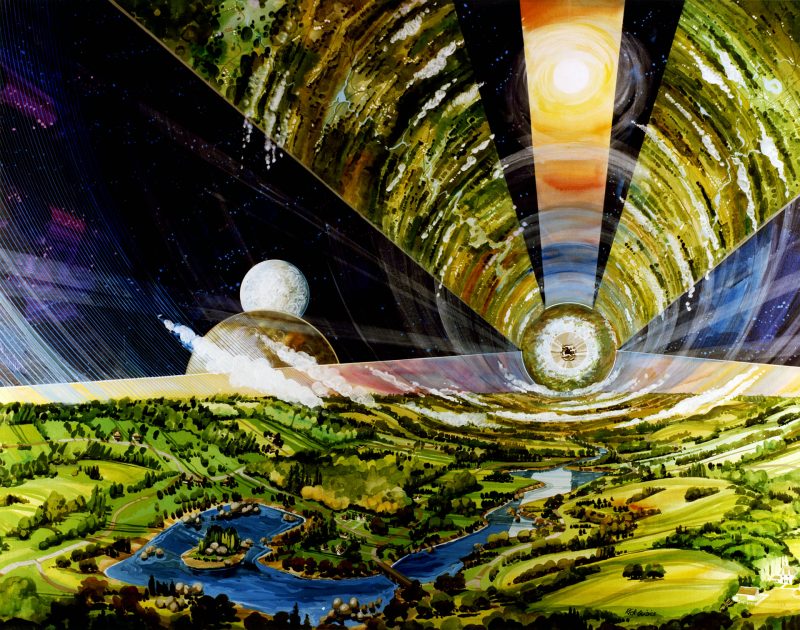
An illustration of few two-cylinder colonies aiming at the Sun
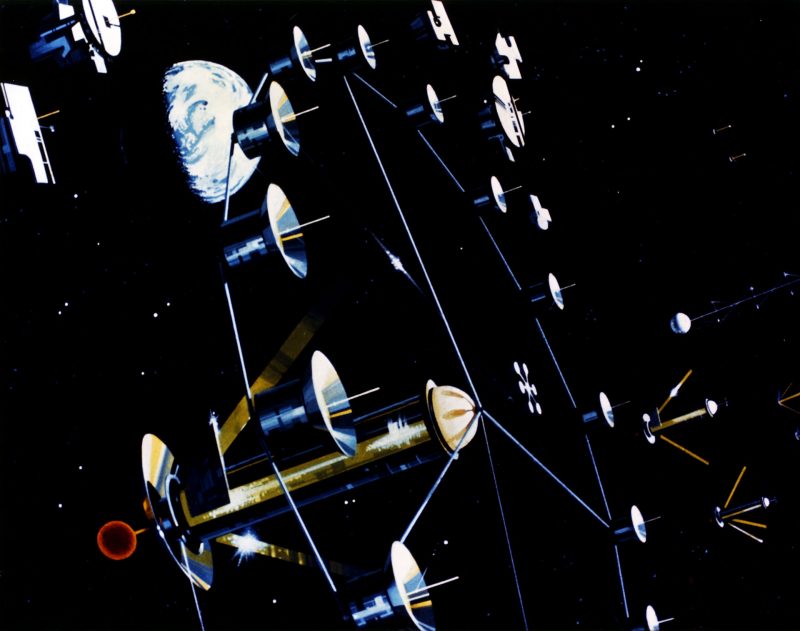
Source: spaceset